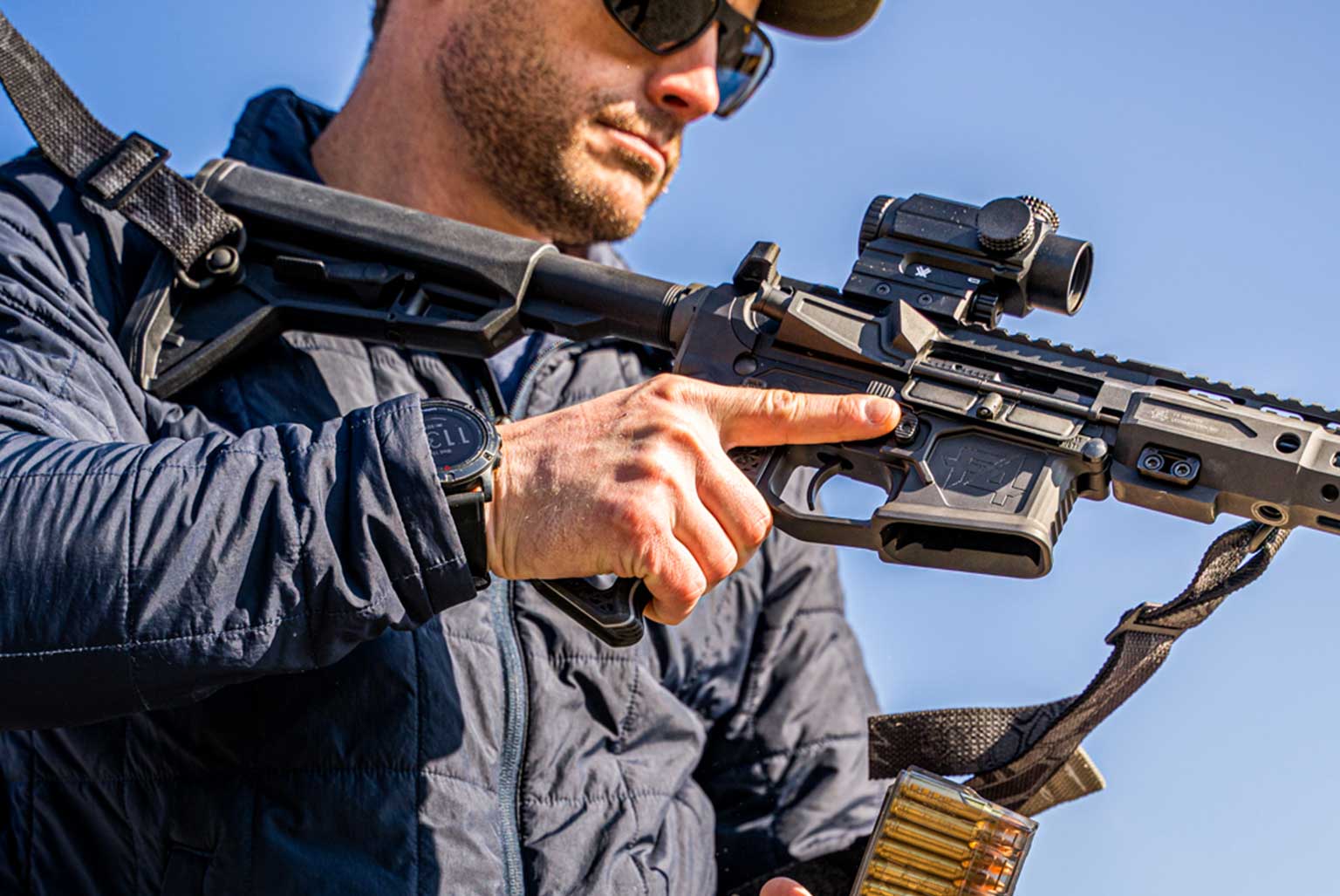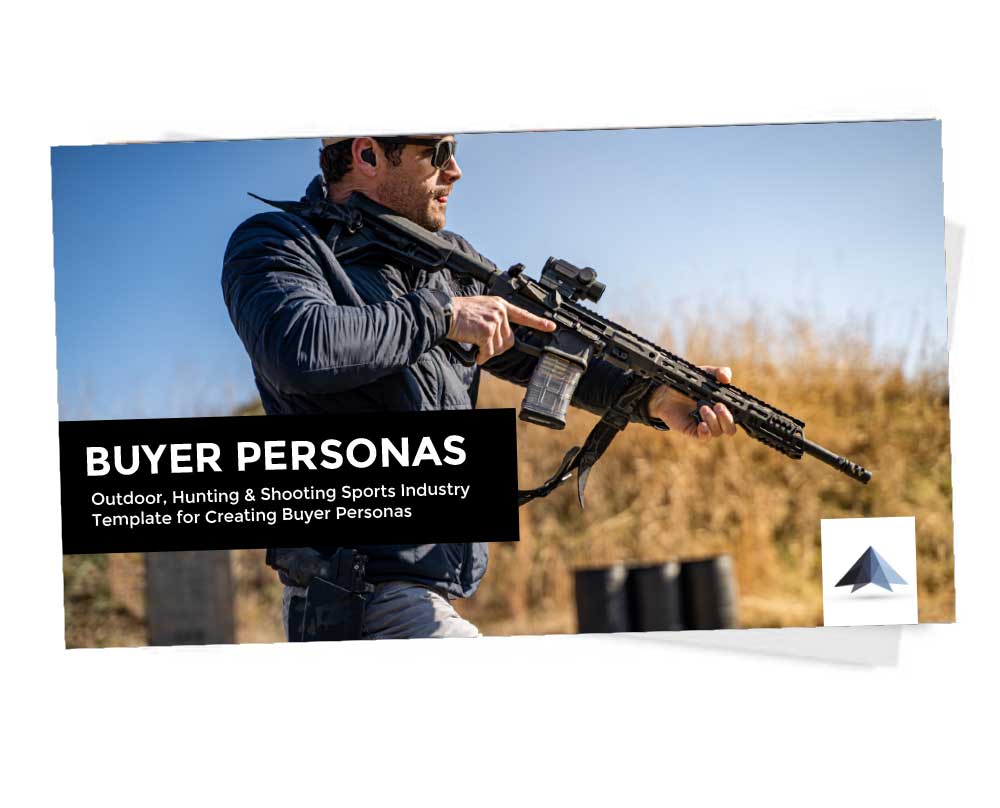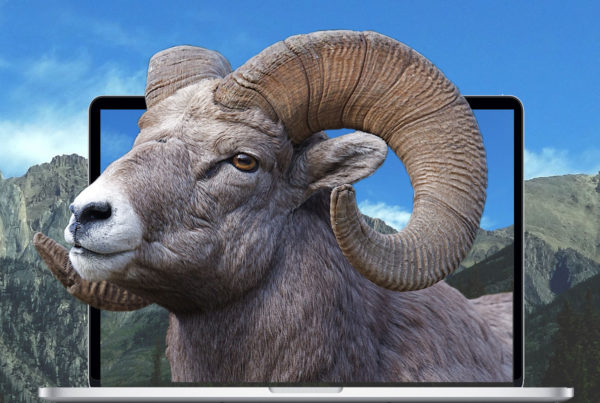
Do you really know who your customers are? This is one of the hardest questions for outdoor, hunting, and shooting sports business owners to answer.
- Who specifically is our customer?
- What are their pain points?
- Who are they aspiring to become?
- How does our product help them achieve their goals?
- How do we guide them in their journey?
I think most of us will admit we don’t know our customers as well as we should. And in the era of COVID and social unrest, it’s more important than ever to know how consumer interests, motivations and spend are changing. This is especially true when you consider the millions of new gun owners, hunters and anglers coming into the market.
By neglecting to have an accurate and well-defined customer or—buyer persona—you hinder the potential and effectiveness of your marketing efforts.
Marketing is about knowing your customer better than anyone else. The understanding that comes with this insight allows you to speak their language at their level, at the right place and at the right time about your product or services in an authentic and human way. Clarify your message and create some great branding—and you got a good foundation to build your marketing program.
So What Are Buyer Personas and why Should I Care?
Buyer personas are fictional representations of your ideal customers. They are the granular view of the character in your brand’s story. They are based on real data about customer demographics and online behavior, along with educated speculation about their personal histories, motivations, and concerns.
How Are Buyer Personas Created?
Buyer personas are created through research, surveys, and interviews of your target audience. That includes a mix of customers — both “good” and “bad”— prospects, and those outside of your contact database who might align with your target audience. You’ll collect data that is both qualitative and quantitative to paint a picture of who your customer is, what they value, and how your solution helps them achieve their goals.
In this post, I’ll give you the steps you need to accurately identify your buyer persona. This will allow you to focus your content and messaging like a laser for better results.
1. First Start With Some Background
It’s good first to start with some broad strokes and then fill in the blank areas as you go. To begin, start by answering the questions below.
- Basic details about persona’s role
What do they do for a living?
What is their level of education?
- Key information about the persona’s interests
List facts like big game hunting, CCW, archery, hiking etc.
How often do they engage in these activities? - Relevant background info, like education or hobbies
What do they typically do in their spare time.
Are they rushed for time, busy parents? Weekend warriors? Workaholics?
TIP: For established businesses: When first starting, look to who your current customers are (if applicable). Write them on a big sheet of paper and find trends or commonalities among them. It’s a good bet that a lot of them will fall into the same bucket.
2. Demographics
Demographics round out the edges and fill in the blanks. Important as demographics are, they still are only one dimension of your customer. Use the questions below:
- What is their gender? Male or female?
- Age range
- Household income (Consider a spouse’s income, if relevant)
- Urbancity (Is your persona urban, suburban, or rural?)
3. Identifiers
Identifiers help you sound like your buyer persona. If your customers are western hunters, you’ll want to utilize your knowledge of big sky hunting and make sure your writing sets the right tone. If your buyer persona are mid-west hunters, you’re going to want to talk as such.
- Buzz words
List some industry buzz words and words that are commonly used by your buyer personas - Mannerisms
What does your buyer persona sound or act like? - Language
What kind of language do they use? Is it intelligent and articulate? or more southern?
4. Aspirations
Begin listing your buyer persona’s primary and secondary goals. This will begin to give you ideas on what kind of messaging, content and materials you should create. Interview them to get more detail.
- Persona’s primary goal – What are they trying to get better at?
- Persona’s secondary goal – Is it to spend more time outdoors?
TIP: When potential customers call, ask them why they contacted you. When you’re on the phone with your customer, make it a point to ask them some of the questions above.
5. Challenges
Now we’re getting into the nuts and bolts. List the challenges your buyers face. Finding property to hunt or gun ranges? Learning basic tactical skills? Creating relevant communication?
- Primary challenge to persona’s success – Is it finding the right equipment?
- Secondary challenge to persona’s success – Getting more range time?
6. How We Help
Begin brainstorming on how you can help your personas. Think beyond what your product or service directly offers. Move in the direction of other dimensions, verticals or channels of your offering. What might you be able to provide that leads them to your solution?
- How you solve your persona’s challenges – We offer free online hunting/firearm training.
- How you help your persona achieve goals – We give you a community to learn.
7. Real Quotes
To humanize, list some real quotations taken from your interviews and surveys. This will ground the persona even more in your mind and in the minds of your marketing and sales team.
- Real Quotes
Include a few real quotes taken during your interviews that represent your persona well. - Common objections
Identify the most common objections your persona will raise during evaluating your product
8. Clear Messaging
Now that you have a good understanding of your persona, how can you distill this information into a short succinct clear message. This message should be used in your positioning statement, tagline or one liner. It should be the main storyline of your your brand. It can also be the trunk of which all your content hangs off of.
- How should you describe your product to your persona?
- Include a few real quotes – taken during your interviews that represent your persona well. This will make it easier for employees to relate to and understand your persona.
- Oneliner
Make describing your solution simple and consistent across everyone in your company.
9. Add A Picture And Name Them
Last but not least, add a picture of them. If you have multiple buyer personas—pick a picture for each. It can be a current customer from your Facebook page or a stock photo.
10. Communicate This To Your Company
How do you communicate this new understanding of your target customer with your entire organization? After all, if your sales and marketing teams don’t understand who they’re speaking to, it’s hard to craft a message that really resonates.
To get started, download the free buyer persona’s template below to get an example of how to present your buyer persona to your company for greater understanding and marketing ROI.
 FREE DOWNLOAD: A Guide to Creating the Buyer Persona
FREE DOWNLOAD: A Guide to Creating the Buyer Persona
The key to maximizing your marketing efforts
In this powerful template — we help you and your team think through and identify who your ideal customer is. This will enable you to focus your messaging and maximize your marketing and sales. It will also help you present your buyer persona to your team for clarity.






